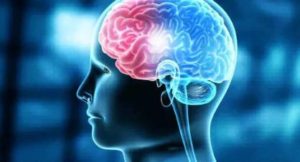
New Delhi: A 33-year-old man recently lost his balance while lifting weights during an exercise class and drank a gallon of water thinking he felt dizzy due to dehydration.
However, Alex McKeown, a resident of Chicago had suffered a stroke, the doctors revealed after he was taken to the hospital when even drinking orange juice did not help.
McKeown said he felt uneasy the entire morning but pushed through and went to his workout class. Despite completing the first three rounds of exercise, McKeown said he could not finish the entire duration after feeling light-headed and dehydrated.
The gym staff called an ambulance after Alex fell on the floor and was diagnosed with a brain stroke caused due to aortic aneurysm, a swelling in one of the arteries which raise the risk that plaque could break off an artery and cause a blockage.
The condition is usually silent and causes no symptoms until it is advanced.
“By the time I got to the hospital, I couldn’t lift my left arm or my left leg and couldn’t see out of my left eye,” McKeown told reporters.
Doctors said McKeown got rapid and timely treatment and has now made a full recovery without suffering any long-term damage. Had he waited, however, it was possible that he would have been left struggling to walk and talk or even could have suffered fatal consequences.
What is an aortic aneurysm and are they the same as a stroke?
According to health experts, aneurysms and strokes are not the same, but a ruptured aneurysm can lead to a hemorrhagic stroke and bleeding in or around the brain. The same happened in Alex’s case.
Symptoms of an aneurysm that has burst or is likely to burst include a thunderclap headache, also known as a hemorrhagic stroke.
A stroke happens when a blockage forms in an artery supplying the brain, cutting off cells from their vital nutrients and oxygen supply and leading them to die rapidly.
Doctors say the condition is not common in young adults, with only about 10-15 per cent of cases in people under 45 years old. People over 60 are most at risk.
“Alex’s case is remarkable because we typically don’t see strokes in his age group,” Dr. Dr Ali Shaibani, the chief neurologist for radiology at Northwestern Medicine in Chicago told the Daily Mail. “You lose about 1.9 million brain cells per minute with a stroke, so we moved very quickly to clear out a large blood clot that was blocking his artery,” he added.
Subtle symptoms of stroke you may overlook
According to doctors, a few common and visible symptoms of stroke which include slurred speech, weakness, and drooping on one side of the face or body are easily recognized.
However, there are a few more subtle ones, which include:
Balance
Symptoms that would fall into this category include:
- Sudden loss of coordination
- Trouble walking
- Loss of balance
- Dizziness or vertigo
- Nausea and/or vomiting
Experts say these signs are mostly associated with cerebellar or posterior circulation strokes, which occur in the back of the head.
Eyes
Sudden loss of vision, blurry vision, or extreme eye pain should be taken seriously as it could be another possible sign of stroke.
Strokes involve the occipital lobes, located in the back of the brain.
Headaches
Headaches are not usual signs of a stroke but are a common complaint in those who suffer from ischemic strokes, where a blood clot cuts off the blood supply to the brain.
This type of stroke is the most common, accounting for nearly 85 per cent of all strokes.
Disclaimer: Tips and suggestions mentioned in the article are for general information purposes only and should not be construed as professional medical advice. Always consult your doctor or a dietician before starting any fitness programme or making any changes to your diet.




 Driving Naari Programme launched in Chandigarh
Driving Naari Programme launched in Chandigarh






























